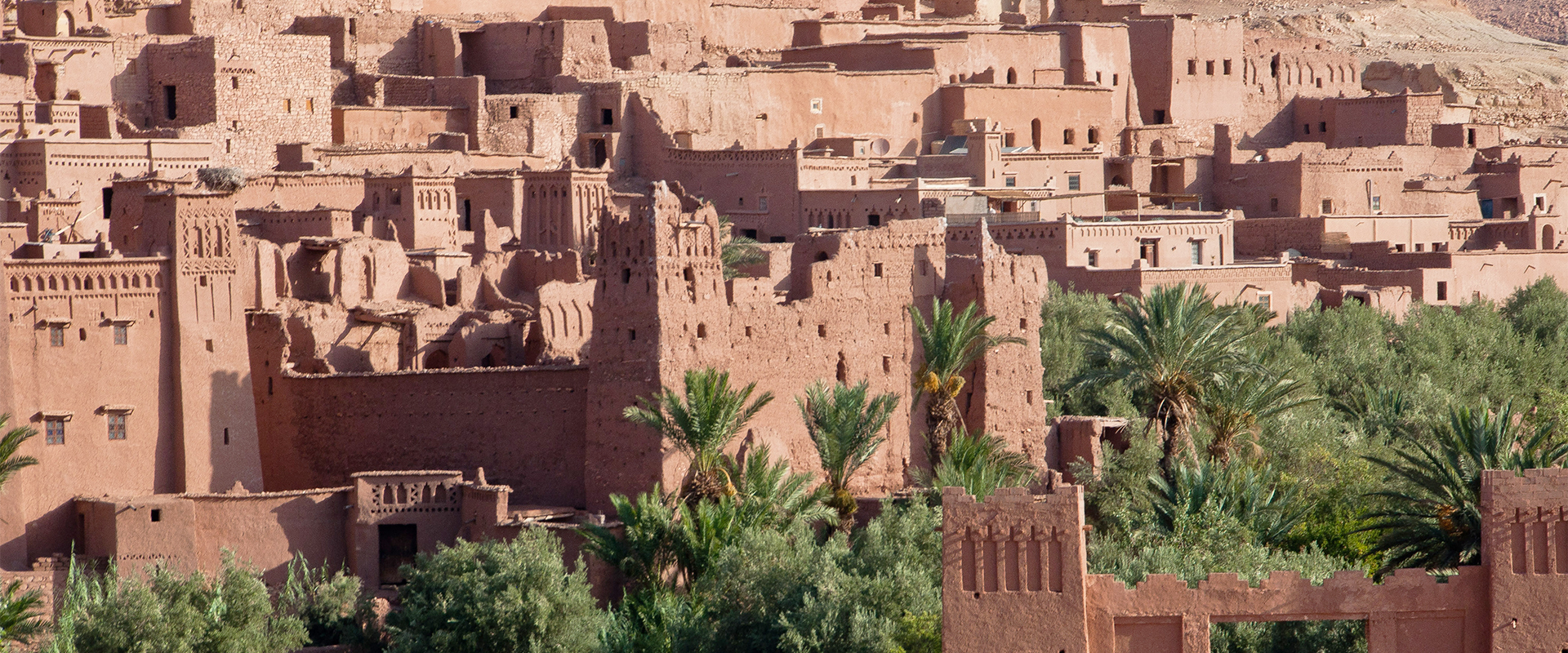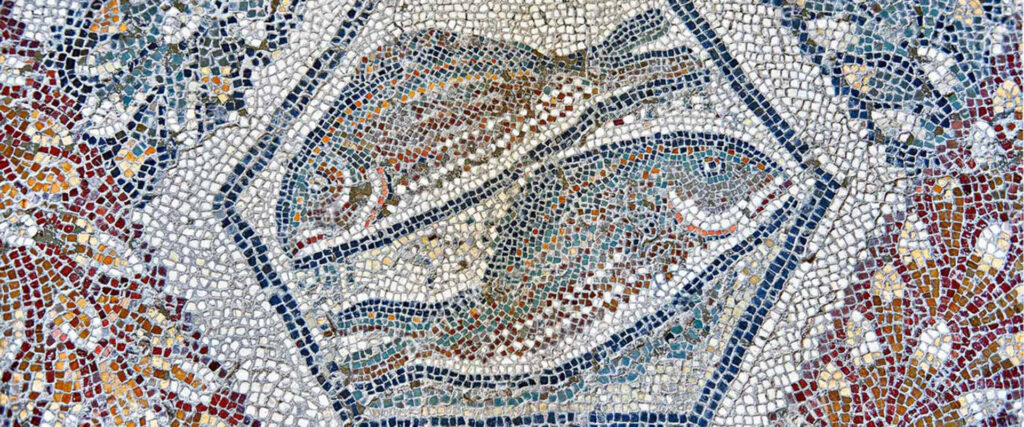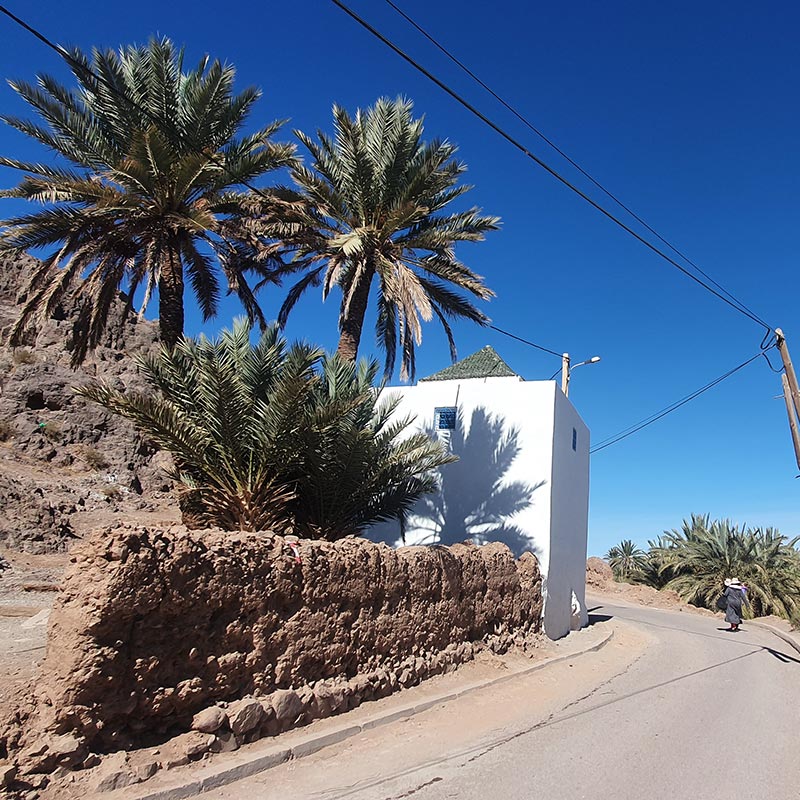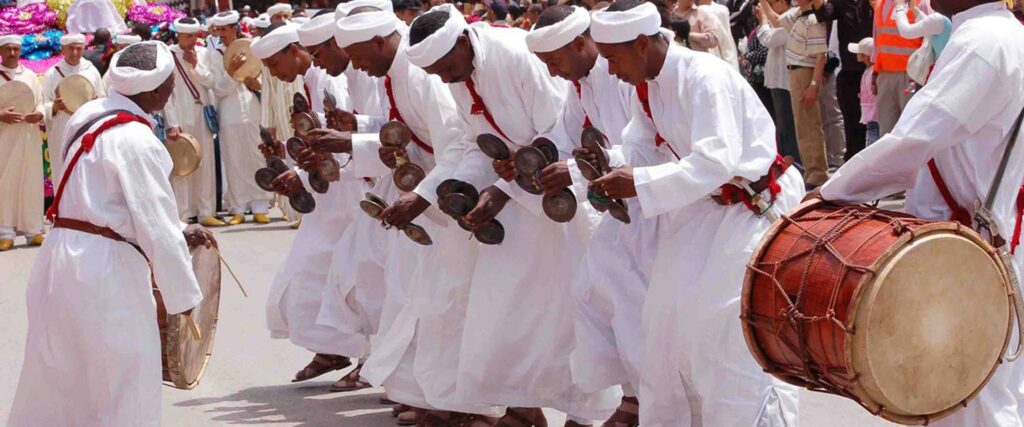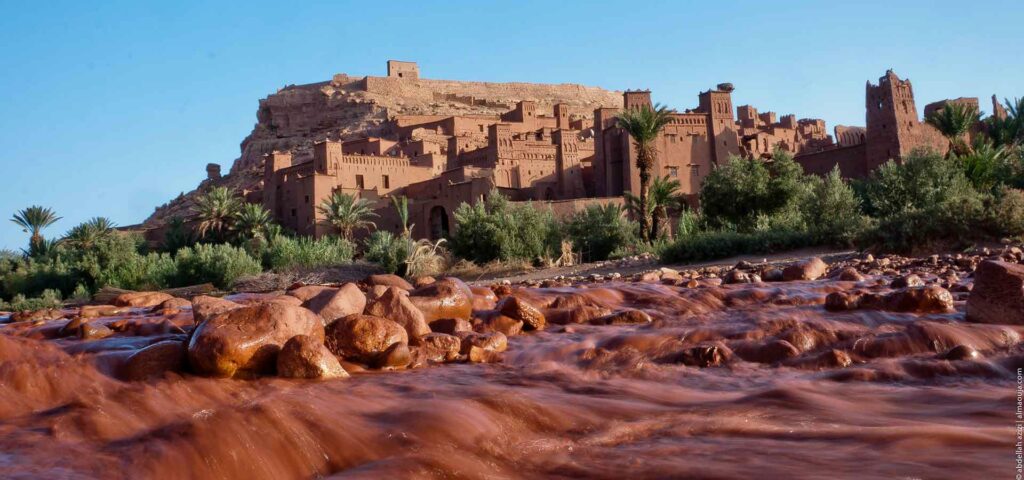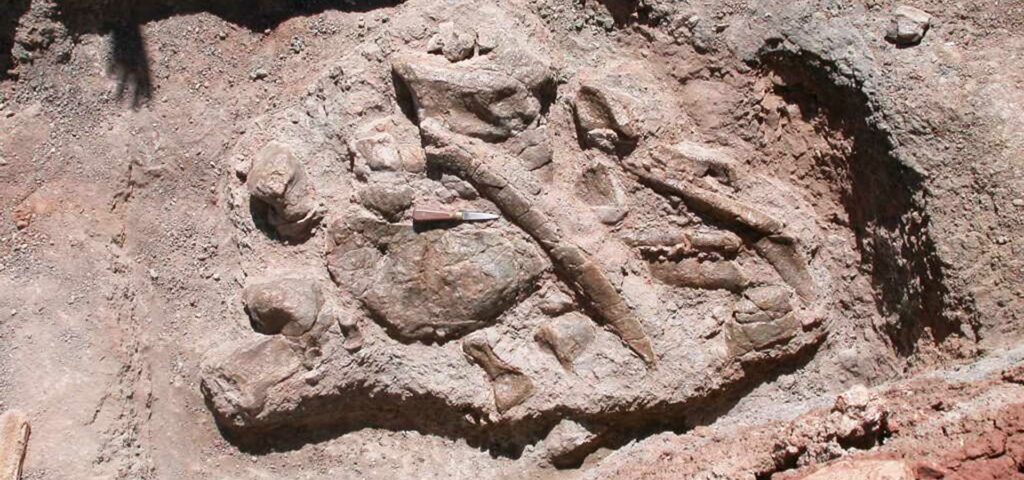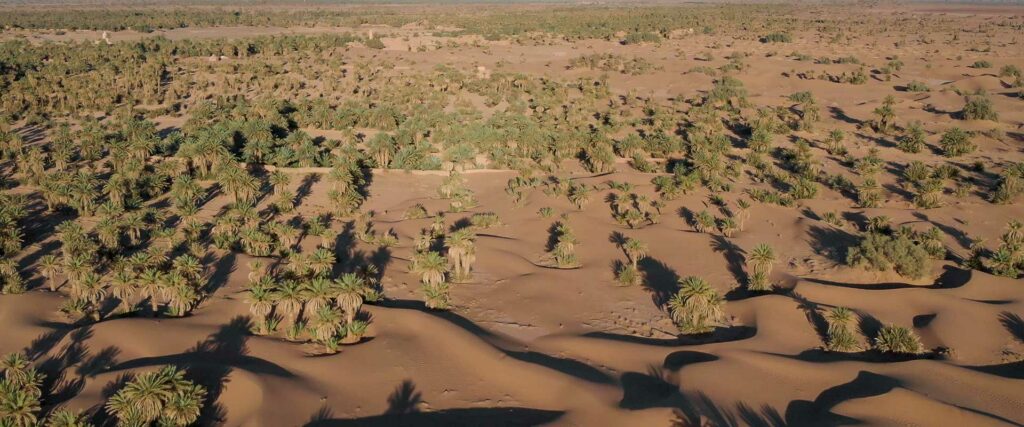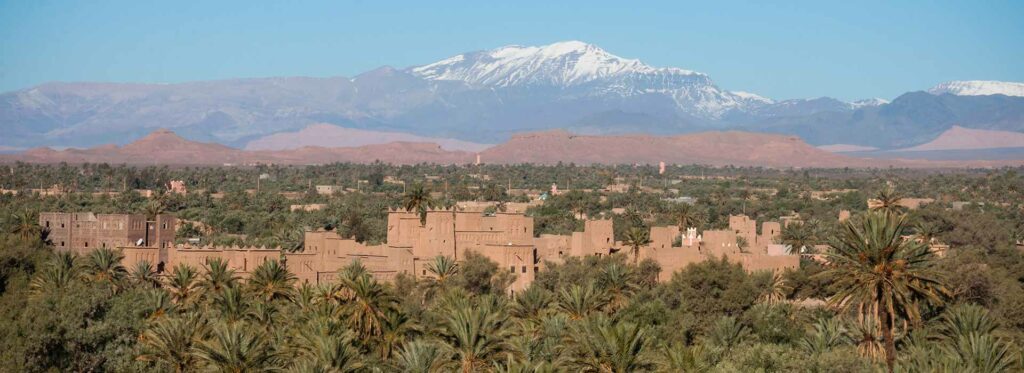The traveler thus admires, scattered along the valleys fracturing the mineral vastness of the Atlas, all these villages and their homes, huddled together with a clear intent of protection, made of earth and embedded in the earth, as if veiled, almost invisible beneath the uniformity of the ochre adorning them.
At the ksar of Aït Ben Haddou, as everywhere else in the southeastern Moroccan region and beyond the vast Sahara Desert, the structure of dwellings is built block by block using the compaction technique within a wooden frame of slightly moist earth interspersed with stones. This is the age-old technique of rammed earth construction.
One must envision the repeated action of the artisan mason. He compacts, using a long and heavy wooden pestle, the natural mortar to the rhythm of the workers’ song, who pour, one after the other, their bucket of earth into the mold, thus rendering, under the force of his blows, and after drying, the earth mixture as solid as rock.
To live in the embrace of the earth is above all to shield oneself from the vagaries of climate, and the region welcomes them here in their starkness, both winter and summer. It is also to indulge in the encompassing silence. It is to provide one’s community with an organized, comforting home, as so many peoples have done under different skies, around a central room pierced in its midst by an opening to the sky and its lights, with a series of rooms surrounding it.
This earthen structure is covered on its facades with another layer of earth mixed with straw or sand. Here lies the opportunity to inscribe the signs of its mixed traditions, perpetuating the sacred or simply delighting in presenting to the eye the elegance of the designs.
Often, walls surrounded the villages in their entirety to fortify them against all threats and thus preserve their agricultural harvests from the voracious appetite of enemies ever on the lookout. The village then became a ksar, an Ighrem in the Amazigh language. In its center, a large space allowed the inhabitants to gather to discuss collective affairs or to celebrate around traditional Ahwach dances. Here in Aït Ben Haddou, the agora is organized in a square called Agoulid n’Youssef.
The Jewish community of the ksar used to gather around a round stone, Tifirte n’raha, also called Abraham’s stone. The caravanserai near the north entrance, called Imi n’Taqmout, welcomed visitors and their mounts. A main street irrigated a maze of narrow alleys, often covered with a roof. Stone benches here and there offered rest for the elders. The mosque awaited prayers, as did the synagogue.
Thus went life in the ksar of Aït Ben Haddou, at the heart of the earth and on the thread of time.
